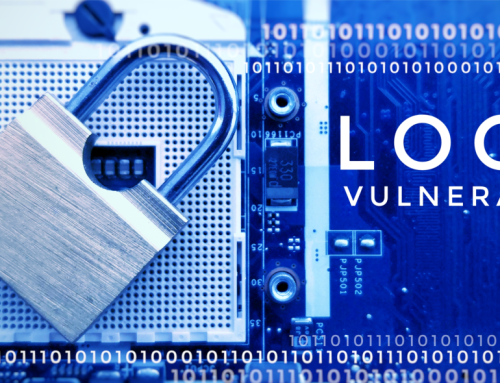Ransomware attacks have become all too commonplace, and as they happen more frequently, they’ve made headlines. The question remains — to pay the ransom or not?
Generally speaking, most security pros never recommend paying the ransom, but it can be the most effective way out in some cases. In the end, the business needs to run. Otherwise, you lose productivity, and revenues take a hit.
So, where do you go from here to protect the business and stay ahead of the game when it comes to ransomware attacks?

Mistake #1: Reactive Response Plan to Ransomware Attacks
Ransomware attacks happen, so most would agree that a response plan should be in place ahead of potential problems. Unfortunately, that’s not always the case. Instead, the security team is more reactive, and the response is more knee-jerk reactions than logical thinking.
The security team should create a formal, proactive response plan before these attacks happen. It gives you a clear plan to follow in the event of an attack, which leads to better decisions and an overall better result.
You don’t want to give in to fear and panic, and having a proactive response plan will help. Don’t be surprised if the company management is giving in to the emotional response from undergoing an attack. Remind everyone that you’ll all be better off if you follow a prepared plan to get business operating as normal as soon as possible.

Mistake #1: Reactive Response Plan to Ransomware Attacks
Ransomware attacks happen, so most would agree that a response plan should be in place ahead of potential problems. Unfortunately, that’s not always the case. Instead, the security team is more reactive, and the response is more knee-jerk reactions than logical thinking.
The security team should create a formal, proactive response plan before these attacks happen. It gives you a clear plan to follow in the event of an attack, which leads to better decisions and an overall better result.
You don’t want to give in to fear and panic, and having a proactive response plan will help. Don’t be surprised if the company management is giving in to the emotional response from undergoing an attack. Remind everyone that you’ll all be better off if you follow a prepared plan to get business operating as normal as soon as possible.

Mistake #2: Forgetting About Malware Containment
Let’s look at it this way. As most people can relate these days, when a virus finds its way in, it spreads unless containment is a priority, right?
Well, it works the same in the digital world. The issue comes up when people tend to focus on the data that’s being held for ransom instead of stopping the spread in its tracks. What you actually want to do is isolate the problem to get rid of the attack. If you don’t get to the root of the issue, it can spread further. The result is another “infection,” resulting in paying a ransom again.
Mistake #2: Forgetting About Malware Containment
Let’s look at it this way. As most people can relate these days, when a virus finds its way in, it spreads unless containment is a priority, right?
Well, it works the same in the digital world. The issue comes up when people tend to focus on the data that’s being held for ransom instead of stopping the spread in its tracks. What you actually want to do is isolate the problem to get rid of the attack. If you don’t get to the root of the issue, it can spread further. The result is another “infection,” resulting in paying a ransom again.


Mistake #3: Unverified Backups
A good, working backup that is safe in offsite storage, away from malicious access, can be the difference between a complete stop in production or viewing everything as an unfortunate blip.
Unfortunately, IT pros everywhere are guilty of not regularly checking backups or even running backups on a regularly planned schedule. When a ransomware attack happens, that leaves businesses out of luck if there’s no backup.
The reason you must secure and verify backups along with storing them on a separate network or a machine is twofold. First, having it on a different internal network will help prevent attackers from reaching it. Secondly, if it’s on a device that is not connected at all, you’ll know that it is out of reach from network-wide attacks.

Mistake #3: Unverified Backups
A good, working backup that is safe in offsite storage, away from malicious access, can be the difference between a complete stop in production or viewing everything as an unfortunate blip.
Unfortunately, IT pros everywhere are guilty of not regularly checking backups or even running backups on a regularly planned schedule. When a ransomware attack happens, that leaves businesses out of luck if there’s no backup.
The reason you must secure and verify backups along with storing them on a separate network or a machine is twofold. First, having it on a different internal network will help prevent attackers from reaching it. Secondly, if it’s on a device that is not connected at all, you’ll know that it is out of reach from network-wide attacks.
Mistake #4: Handling the Problem Solo
Some businesses don’t have the resources to staff an entire IT department that can handle ransomware attacks. You may have a single person that you rely on for all of your tech needs, but ransomware is a horse of a different color.
Even if your business does have an IT department, it’s also a good idea to have someone on call who specializes in ransomware defense. Otherwise, dealing with an attack can get tricky, especially in the aftermath. You need someone who can also help you and your business prevent future attacks.
It’s also a good idea to engage law enforcement because they may have the tools you need to break the encryption. They might also have special access to cryptocurrency to pay the ransom, if necessary.


Mistake #4: Handling the Problem Solo
Some businesses don’t have the resources to staff an entire IT department that can handle ransomware attacks. You may have a single person that you rely on for all of your tech needs, but ransomware is a horse of a different color.
Even if your business does have an IT department, it’s also a good idea to have someone on call who specializes in ransomware defense. Otherwise, dealing with an attack can get tricky, especially in the aftermath. You need someone who can also help you and your business prevent future attacks.
It’s also a good idea to engage law enforcement because they may have the tools you need to break the encryption. They might also have special access to cryptocurrency to pay the ransom, if necessary.

Mistake #5: Wasted Time
There can be a lot of wasted time when dealing with a ransomware attack. Once you have been made aware of a ransomware attack, one of the first calls that need to be made is to the cyber insurance company. If you wait too long, you won’t be able to collect any insurance, so this is critical.
Another massive waste of time is spending far too much time looking for decryption keys. Here’s the thing with decryption keys — you’ll only find keys if the ransomware is already known. Chances are that you won’t find one because many attacks are target-specific.
That means the associated decryption keys likely won’t be found. If you insist on finding a key or use a tool that you’re not sure will work, you can also risk damaging the files in the process.

Mistake #5: Wasted Time
There can be a lot of wasted time when dealing with a ransomware attack. Once you have been made aware of a ransomware attack, one of the first calls that need to be made is to the cyber insurance company. If you wait too long, you won’t be able to collect any insurance, so this is critical.
Another massive waste of time is spending far too much time looking for decryption keys. Here’s the thing with decryption keys — you’ll only find keys if the ransomware is already known. Chances are that you won’t find one because many attacks are target-specific.
That means the associated decryption keys likely won’t be found. If you insist on finding a key or use a tool that you’re not sure will work, you can also risk damaging the files in the process.
Learn From Others’ Mistakes
Learn about ransomware attacks from other people’s mistakes and don’t repeat them. If you’re a victim of an attack, look back with a critical eye to identify gaps once it’s over. Find the vulnerabilities so you can neutralize potential future attacks.
If you’re looking ahead, consider planning out a proactive response plan and simulating a real-time attack to practice. Proper training and practice are vital to keeping a level head if and when an attack happens.
Ransomware attacks can be stressful, so it’s critical to try your best to be prepared. IT Done For You can help you evaluate your current IT vulnerabilities or simply be available for questions about ransomware. Contact us to learn more.
Learn From Others’ Mistakes
Learn about ransomware attacks from other people’s mistakes and don’t repeat them. If you’re a victim of an attack, look back with a critical eye to identify gaps once it’s over. Find the vulnerabilities so you can neutralize potential future attacks.
If you’re looking ahead, consider planning out a proactive response plan and simulating a real-time attack to practice. Proper training and practice are vital to keeping a level head if and when an attack happens.
Ransomware attacks can be stressful, so it’s critical to try your best to be prepared. IT Done For You can help you evaluate your current IT vulnerabilities or simply be available for questions about ransomware. Contact us to learn more.
Share This Story, Choose Your Platform!
Let’s have a 15-minute video call
We are now taking on new clients.





